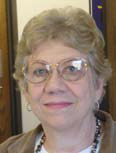Our grandchildren often ask what it was like growing up in the olden days. First, we have to define “olden days.” Was it 1980 when everyone had a color TV and MTV was blasting out music. Or was it 1955 when some people were lucky enough to have a large black-and-white TV in their living room?
It’s sometimes difficult to cast your thoughts back to an unfamiliar time. Did your grandparents finish just the 8th grade according to the 1940 U.S. census? Did they have a radio as asked in the 1930 census? Was your family affiliated with a particular religion? Iowa assumed most people were and asked them to name their religion in the 1925 state census. Did your great-grandparents bury children who died before the age of three? What diseases caused death to young children?
What sort of housing did your ancestors live in? During the 1930s, people were sometimes forced to shelter in a lean-to, a barn, a cave, or a shanty. In the 1910s, people frequently lived in a rented room or apartment. In the 1850s, most people in the U.S. were farmers. They built their own houses and barns, often with help from family or neighbors. Family members often lived close to each other so that they could “exchange” work. Have you tracked the land to see who lived near each other in that place?
How did your ancestors get to that particular county? Were they part of a neighborly group who traveled together from New York to Iowa in the 1850s and settled as neighbors in the new place?
Many researchers will tell you that they cannot find any records of their family. What they mean is they have found records but haven’t thought about how those records reflect the time and place where people lived.
~ Carol Cooke Darrow, Certified Genealogist, teaches free Beginning Genealogy classes at the Central Denver Public Library on the second Saturday of the month from 10 am – 2 pm.

